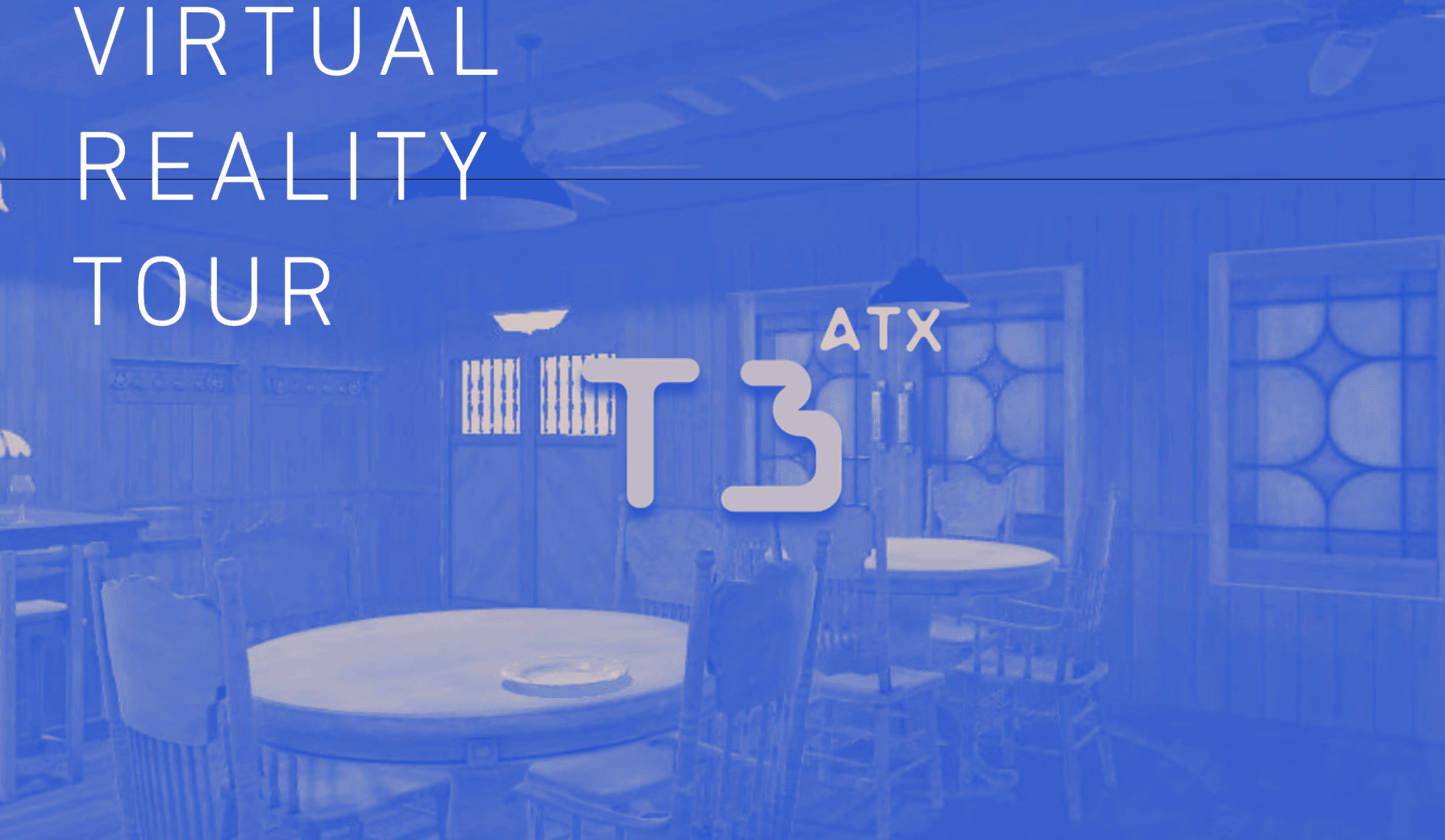VIRTUAL REALITY
T3 ATX
Project description
Can history education as mere instruction of objective information go beyond its limitations in engaging students and provide lasting experience?
T3 is an exploration into using virtual reality environments to study the local history of a place through a first person driven experience. For this specific project, we chose the Scholzgarten in Austin,TX as an anchor point to explore the city’s local history and changes over a time period of almost 150 years.
The experience’s impact on learning was measured through immersion, presence, recall and change in behavior of the users.
Understanding
Virtual Reality is a relatively newer medium and not much exploration has been done in its application to many fields. We wanted to understand if an experiential mode of learning history would have a more positive impact on the users than traditional reading, or audio-visual media. We looked at many factors that passively indicate deep learning such as familiarity or recognition/recall of information in users’ present day experience of the city.Since exploring local history thorough immersive first person experience was a new concept to most users, we relied on two existing methods to help them understand the concept, while also aiming to test it with user interest, engagement and usefulness. Before we could build the VE itself, we used the concept of exploration through first person inside a game environment, and immersion through a 360 video on YouTube. We gathered and quantified the results through questionnaire, and also interviews and observations.
Design
To design an informative experience, we decided that our VR experience would consist of a storyline to hold the information, experience and also the affordances in place when a user would be interacting through it. Converting information into this experience was at the core of the design, and the research to aid and provide a framework for this was done through user journey maps. Since VR is a spatial medium, it was essential for us to think spatially and design the architecture of the space and place the triggers as an affordance of the character in the context of the bar. We used drinks labelled by their years as triggers that would transport the user to the time period written on the bottle when touched.We felt that the chosen concepts had enough breadth for us to experiment with a variety of user interactions and experiences to help later inform our design choices for our final chosen concept.These concepts were:

The flow the entire experience was vital for the engagement levels and presence, towards this end, we decided to embed the triggers for the transitions between the time periods into interactions of the user with the objects, conversations and auditory cues from the other agents inside of the VE.

We made a low fidelity VE with two different models inside Unity but without a transition that we were happy with.The VE enabled he user to explore the environment, use their hands to interact, and had a time triggered transition into the different time period.
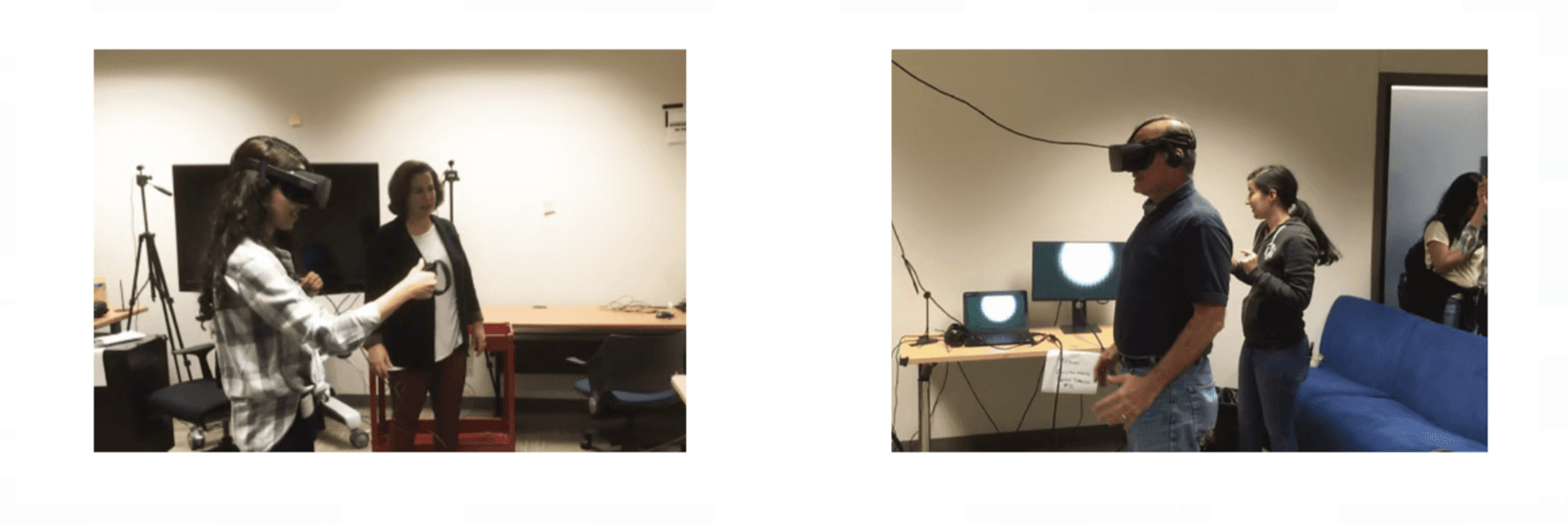
We also conducted a usability testing and documented it by making table with tasks, and noted how the users were able to complete these tasks by themselves and got out of the VE with learnings about the present day environment.

Solution
The final solution consisted of a single large environment which had two different models inside of it which were inaccessible and also invisible from inside each other.These were separated by a ‘transition space’.The transition involved the user passing through a space for 10 seconds which created the effect of morphing, transportation which is inspired from the movie ‘The Matrix’
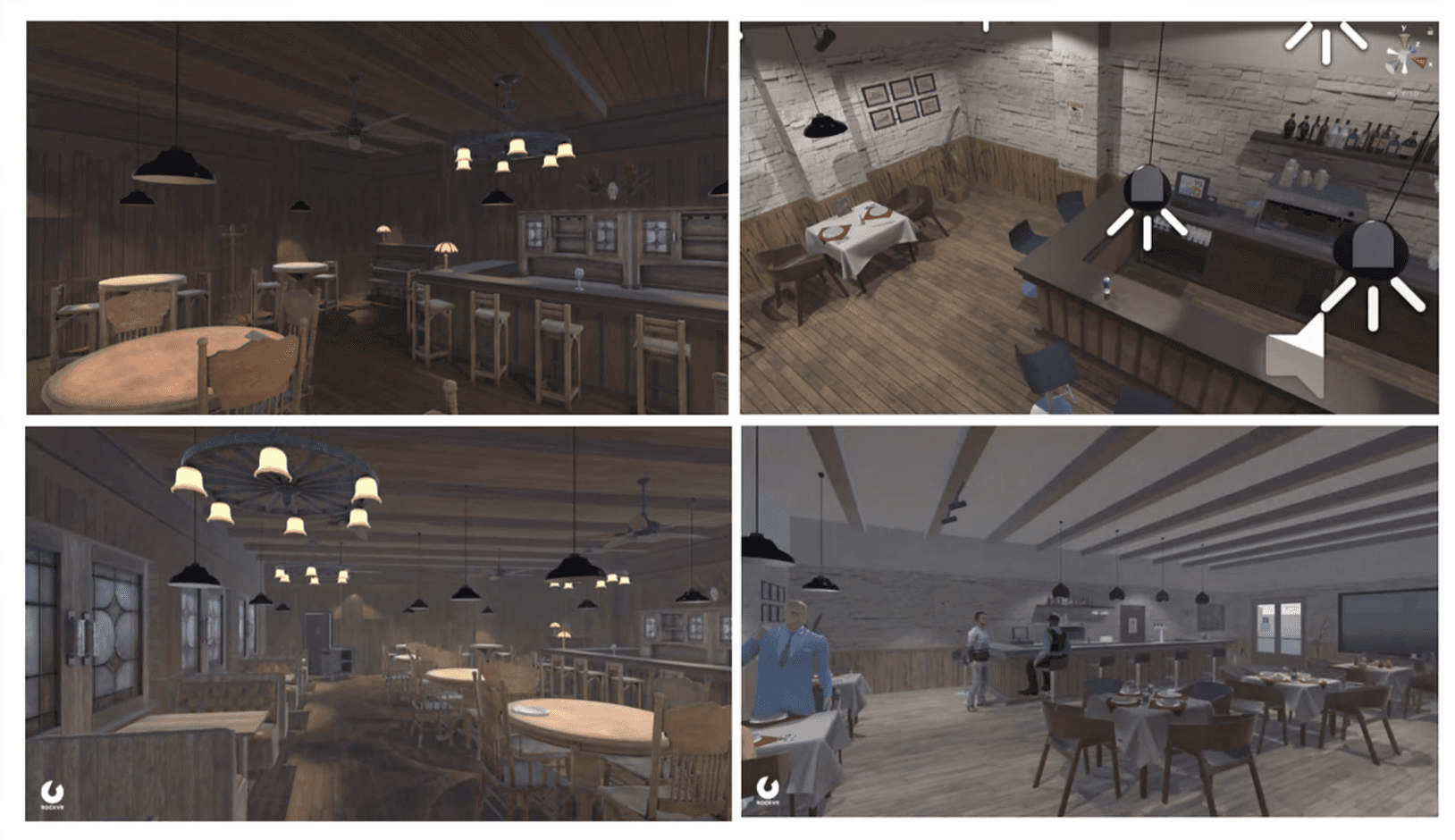
We provided the user with a basic set of affordances - motion, interaction with hands, audio and a set of predetermined gestures of the other agents inside the VE such as gaze and excusing themselves as they were in the middle of a conversation.Diversifying from our original idea of using the drinks as the triggers, we decided to use props such as a payphone, a stamp collection and photographs on the wall that were from a specific time period that the user could travel to.This was to gamify the experience through exploration of theVE. The transition between all the environments is kept consistent and becomes shorter as time passes to reduce the element of boredom and familiarity for the user.The final effect was taken from the movie‘The Matrix’ and evolved an immersive animation with digits and 8-bit sounds.
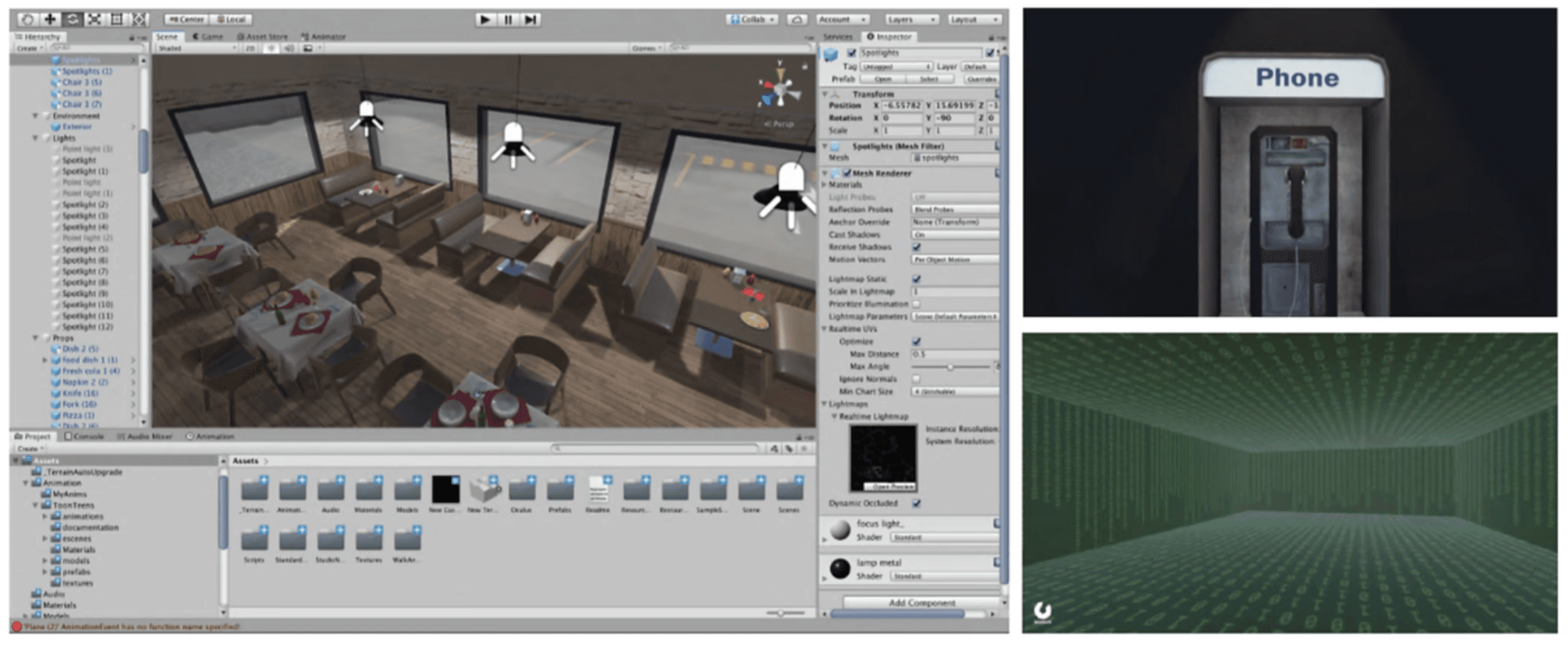
Since VR requires realtime tracking of the whole body, there is extensive scope for data collection and measurement of the experience through it. For this project, we decided to use data on body movement, physiological functions, verbal and other behavioral factors as well. Pairing body language with psychological responses can give insights into behavior of users, and physiological data combined with experience timeline can provide developers data about which aspect of the VR experience to focus, change, and improve.
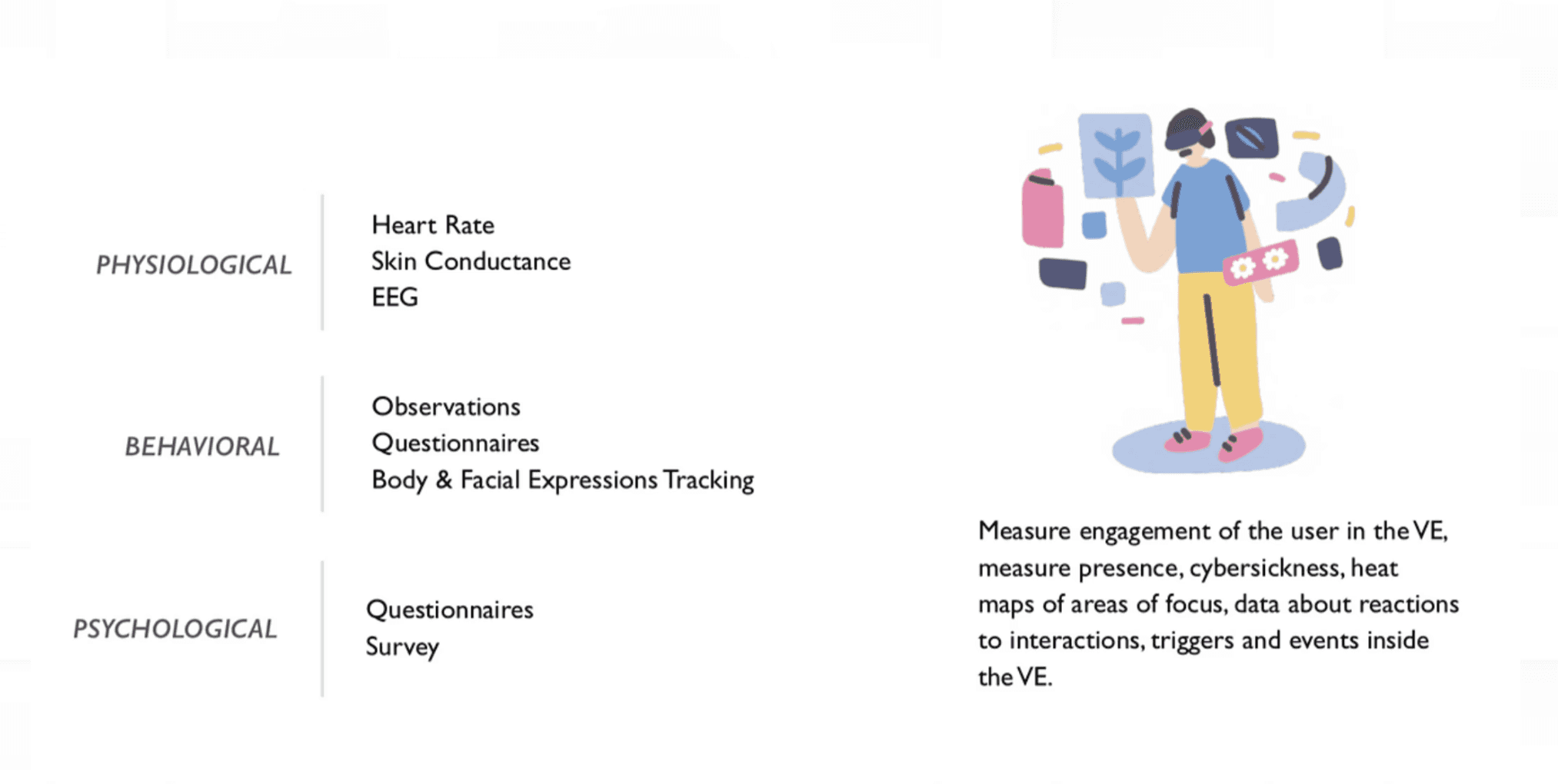
Conclusion & Learning
Our main focus for the T3 VR experience was to show users the functionalities of a full fledged VR environment and the level of detail, control and exploration that was possible in it.We wanted to explore the different ways that VR’s affordances of immersion and simultaneous multi sensory stimulation could be used for education, and better learning.We found that to control a human being’s experience is a hugely rewarding task, but also one that had to be done responsibly, especially considering cybersickness and other motion related issues.The biggest challenge besides introducing and exploring a new concept with a user base that was unfamiliar with it was the time we had to execute the project.We could not design all the environments to our taste, but exploring the medium of VR was rewarding, as were the reactions of the users.
